Introduction
The Nikon AF-S DX Nikkor 55-300mm f/4.5-5.6G ED VR is a 5.5x telephoto zoom lens designed to complement the 18-55mm kit zoom that comes bundled with many cropped-sensor Nikon digital SLR cameras. Offering a 35mm equivalent focal range of 82.5-450mm, the Nikon 55-300mm VR lens features a built-in auto-focus motor, Vibration Reduction and an iris diaphragm with nine rounded blades for a soft rendering of the out-of-focus areas. The optical formula comprises 17 lens elements arranged in 11 groups, including 2 ED glass elements and one high-refractive-index element. The AF-S Nikkor 55-300mm f/4.5-5.6G ED VR is currently available for £259.99 / $349.95 in the UK and the US, respectively.
Про фото MYRAW.RU
Аббревиатура и технические характеристики
Обзор объектива Nikon 55-200mm. f4-5.6 vr.
Ease of Use
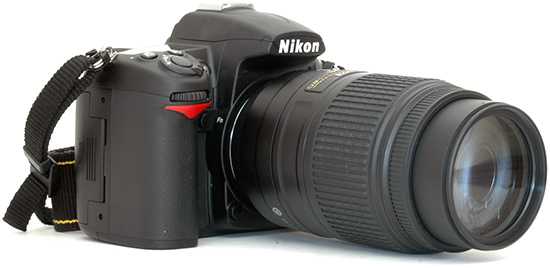 The Nikkor 55-300mm f/4.5-5.6G ED VR lens mounted on a Nikon D7000 body
The Nikkor 55-300mm f/4.5-5.6G ED VR lens mounted on a Nikon D7000 body
Weighing in at approximately 580 grams, the AF-S DX Nikkor 55-300mm f4.5-5.6G is fairly lightweight for a 5.5x telezoom lens, and as seen in the photo above, complements the Nikon D7000 well. It may look a little out of proportion on the smaller D5100 or D3100, though.
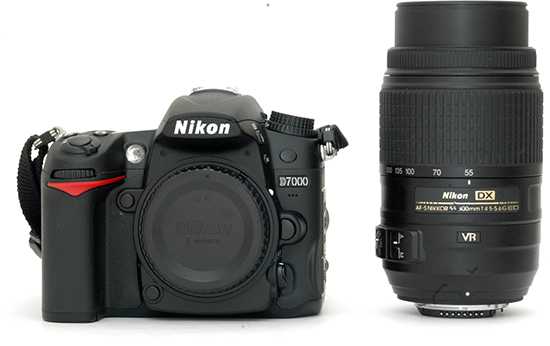 Alongside the D7000
Alongside the D7000
Build quality is pretty decent for a consumer zoom. Most of the outer parts are plastic – contributing the light weight of the lens –, but the optical elements are made of high-grade glass. The zoom ring is wide and ridged, and zoom creep is not an issue. On our test sample, the zooming action was very smooth, but I’ve come across a few copies that had somewhat stiffer zoom rings – this is something to watch out for when shopping for this lens.
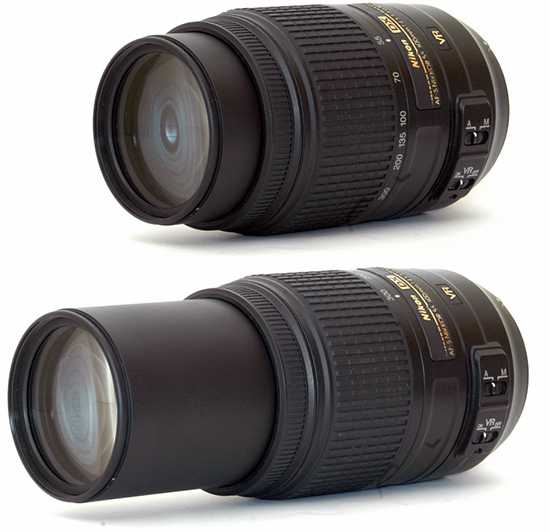 Zoomed out and zoomed in
Zoomed out and zoomed in
Zooming is not internal – as you can see, the front extends considerably upon zooming to 300mm.

In terms of features, the Nikon AF-S Nikkor DX 55-300mm f/4.5-5.6G ED VR is a bit of a mixed bag. One one hand, it has Vibration Reduction on board – hence the VR abbreviation in the product name –; on the other, it isn’t as sophisticated as on some other Nikon lenses. There’s an on-off switch on the lens barrel, but there’s no choice between active and normal modes. Likewise, the lens has a built-in auto-focus motor that allows AF operation on every Nikon DX camera body, including entry-level offerings like the D3100 or D5100, but – unlike with most other AF-S lenses – focusing is not internal, and manual focusing is not possible when the focus mode selector is set to the ‘A’ position, as shown above. The lens has no distance scale and no focus limiter, either.
 Side of the lens
Side of the lens
The AF-S Nikkor 55-300mm lens may have a lot of plastic parts, but the lens mount is, thankfully, made of metal.
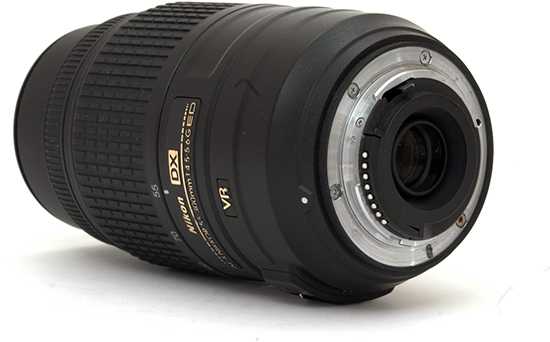 Rear of lens, isometric view
Rear of lens, isometric view
The lens is not claimed to be weatherproof but there is a rubber seal around the lens mount that should provide basic dust protection.
The 55-300mm VR Nikkor ships with a dedicated plastic hood (HB-57) and a soft case (CL-1020).
Focal Range
At the 55mm end of the zoom range, the angle of view is 28° 50′, which is a little bit tighter than that of an 80mm lens on a 35mm body.
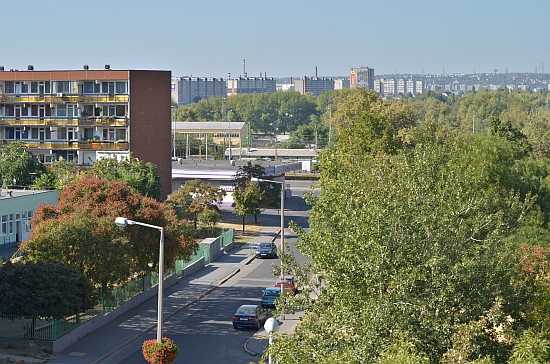 Field of view at 55mm
Field of view at 55mm
At the 300mm end, the angle of view narrows to 5° 20′.
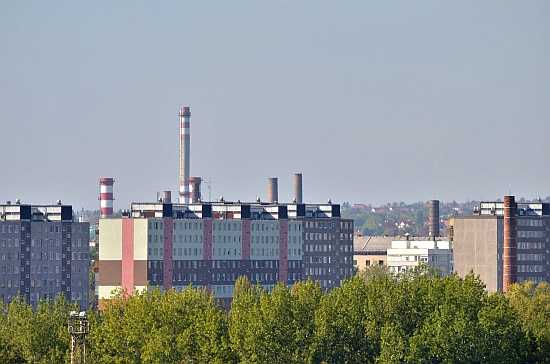 Field of view at 300mm
Field of view at 300mm
Focusing
The AF-S Nikkor 55-300mm f/4.5-5.6 lens has a very narrow focus ring located in front of the – much wider – zoom ring. There are hard stops at both ends of the range, making it easy to set focus at infinity. Polariser users should take note that the 58mm filter thread rotates on focus.
When it comes to AF, the 55-300mm zoom is surprisingly slow for a modern AF Nikkor, and is probably the slowest focusing lens in the AF-S line-up. This isn’t particularly bothersome if you’re photographing stationary subjects, but can pose difficulties when trying to shoot sports. On the plus side, I did not experience much “hunting”, at least in good light. Low-light focusing can be more problematic, but given the slow maximum apertures on offer, this isn’t meant to be a low-light lens anyway.
Chromatic Aberrations
Chromatic aberrations, typically seen as purple or blue fringes along contrasty edges, can be detected in shots taken at or near the longer end of the zoom range, but they are not too prominent. At shorter focal lengths, CAs are practically nonexistent.
Light Fall-off
With the lens set to its maximum aperture, there is a bit of light fall-off in the extreme corners, but it won’t really affect your real-world shots.

Macro
The Nikon AF-S Nikkor 55-300mm f/4.5-5.6G ED VR isn’t claimed to be a macro lens, but its close-up performance is not bad at all. Its 0.28x maximum magnification allows you to fill the frame with a subject that measures just 84x56mm. The following example demonstrates how close you can get to your subject, in this case a Compact Flash memory card.
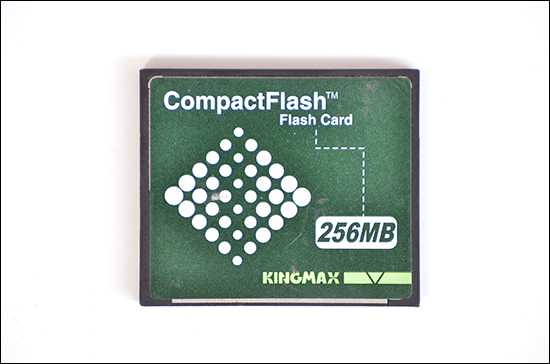 Close-up performance
Close-up performance
Bokeh
Bokeh is a word used for the out-of-focus areas of a photograph, and is usually described in qualitative terms, such as smooth / creamy / harsh etc. In the AF-S Nikkor DX 55-300mm f/4.5-5.6G VR lens, Nikon employed an iris diaphragm with nine rounded blades, and it has resulted in a splendid bokeh in our view. We do realise, however, that bokeh evaluation is subjective; so we’ve included an example and several 100% crops for your perusal.
Sharpness
In order to show you how sharp this lens is, we are providing 100% crops on the following pages.
- Ease of Use
- Sharpness: 1
-
Cont… 2
-
Cont… 2
- Sample Images
- Lens Specs
- Rating & Conclusion
- Review Roundup






























